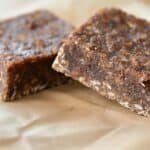How to make chicken sausage at home?, start with ground chicken (a mix of breast and thigh for flavor). Season it with spices like garlic, paprika, or Italian herbs, and mix in a binder like breadcrumbs or rice flour if needed. (1)Optional extras like spinach, cheese, or apple can add variety. Use a sausage stuffer to fill natural casings, or shape the mixture into patties for a simpler option. Cook by grilling, pan-frying, or baking until fully done. Homemade sausage is fresh and customizable. Want detailed steps or flavor combos to try? Keep reading for a complete guide!
Key Takeaway
- Chicken sausage is made with chicken meat, spices, and herbs.
- You can use natural casings or shape it into patties.
- The process is simple and allows for lots of flavor choices.
Ingredients

- Chicken Meat: The base is 5 pounds of chicken thighs or a mix of thighs and breasts. Thighs bring that juicy, rich flavor, while breasts keep it lean. Keeping the skin in the mix adds just the right amount of fat to keep the sausage from drying out. It’s all about balance—too lean, and it’s crumbly; too fatty, and it’s greasy.
- Salt: 5 teaspoons of kosher salt. It’s not just for taste—it pulls moisture from the meat, helping all the flavors blend. Kosher salt’s texture makes it easy to work with, and it seasons evenly.
- Sugar: Just 1 teaspoon, if you want a touch of sweetness. It’s optional, but it can balance the savory spices and even help the sausage brown nicely when cooked.
- Spices:
- 1.5 teaspoons of black pepper for a bit of warmth.
- 1 teaspoon of nutmeg for a subtle, aromatic kick.
- 2 teaspoons each of granulated garlic and onion for savory depth.
- A pinch of cayenne if you’re feeling bold—it’s your call.
- Fresh Herbs: About 1/4 cup of finely chopped sage or parsley. Sage gives it that earthy, classic sausage taste, while parsley keeps it light and fresh. Either works, depending on your vibe.
- Liquid: 1/2 cup of cold chicken broth. It’s not just for moisture—it helps everything bind together, so your sausage holds its shape and stays juicy.
- Casings: Natural hog casings (28-32 mm) are the go-to for that traditional snap when you bite in. Collagen casings are easier to handle if you’re new to this. Or skip casings altogether and go for patties—no rules here.
Optional Add-Ins
 Want to mix it up? Toss in roasted red peppers, sun-dried tomatoes, or even extra herbs. These little extras can completely change the flavor, making each batch feel unique. It’s a great way to experiment and find your favorite combo.
Want to mix it up? Toss in roasted red peppers, sun-dried tomatoes, or even extra herbs. These little extras can completely change the flavor, making each batch feel unique. It’s a great way to experiment and find your favorite combo.
Equipment Needed
Having the right tools makes the whole process smoother (and way less frustrating).
- Meat Grinder: This is non-negotiable if you’re starting with whole chicken. A manual grinder works fine if you’re okay with a little elbow grease, but an electric grinder is a lifesaver for bigger batches. Either way, it’s all about getting that perfect sausage texture.
- Sausage Stuffer: If you’re using casings, you’ll need one of these. A hand-cranked stuffer is affordable and gives you control, but electric ones are faster. If casings feel like too much work, skip this and just shape the meat into patties instead.
- Mixing Bowls: A big, sturdy bowl is your best friend here. It gives you space to really mix everything without making a mess. Using separate bowls for the meat and seasonings can help keep things organized.
- Cooking Thermometer: This is your safety net. Chicken sausage needs to hit 165°F (75°C) inside to be fully cooked. A thermometer takes the guesswork out of it, so you’re not cutting into every link to check.
With these ingredients and tools, making chicken sausage at home becomes less intimidating and more like a fun little project. It’s all about experimenting with flavors and finding what works for you. Plus, there’s something satisfying about knowing exactly what’s in your food.
Instructions

Credits: FOOD ADDICTS
Making chicken sausage at home might sound like a big project, but breaking it down into steps makes it manageable—and honestly, kind of fun.
Step 1: Prepare the Meat
- Debone and Cut: If you’re starting with whole chicken thighs, grab a sharp knife and carefully remove the bones. Once that’s done, cut the meat (and skin, if you’re keeping it) into roughly 1-inch pieces. This size works best for grinding—it’s small enough to keep the grinder happy but big enough to handle easily.
- Grind the Meat: Run the chicken chunks through a meat grinder using a coarse plate first. If you want a smoother sausage, send it through again with a finer plate. That second grind makes a big difference if you’re after a softer, more uniform texture.
Step 2: Mix Ingredients
- Combine Everything: In a big bowl, toss in the ground chicken along with:
- 5 teaspoons kosher salt
- 1 teaspoon sugar (if you like a hint of sweetness)
- 1.5 teaspoons black pepper
- 1 teaspoon nutmeg
- 2 teaspoons each of granulated garlic and onion
- 1/4 cup chopped fresh herbs (sage or parsley work great)
- 1/2 cup cold chicken broth
- Use your hands to mix it all together. Yes, it’s messy, but it’s the best way to make sure everything is evenly combined.
- Taste Test: Scoop out a small bit of the mixture and fry it in a skillet. This is your chance to tweak the seasoning—maybe a little more salt, or an extra pinch of cayenne if you want some heat. Better to adjust now than regret it later. (2)
Step 3: Prep the Casings
- Soak the Casings: If you’re using natural hog casings, soak them in warm water for at least an hour. This softens them up and makes them easier to handle.
- Rinse Them Out: After soaking, rinse the casings under cold water to get rid of any leftover salt. It’s a quick step but makes a big difference in the final texture.
Step 4: Stuff the Sausage
- Fill the Casings: Attach one end of the casing to your sausage stuffer’s tube. Slowly feed the sausage mixture through, being careful not to overfill. Leave a little wiggle room—overstuffed casings can burst, and no one wants that mess.
- Twist Into Links: Once the casing is filled, twist it into links about 6 inches long (or whatever size you prefer). Tie off the ends to keep everything secure. It’s oddly satisfying once you get the hang of it.
Step 5: Cure and Cook
- Bloom the Sausages: Hang the sausages in a cool spot for about an hour. This step, called blooming, lets the flavors settle and develop. It’s worth the wait.
- Cook Them Up:
- Pan-Frying: Heat a little oil in a skillet over medium heat and cook the sausages until browned and cooked through. Use a thermometer to check—they need to hit 165°F inside.
- Grilling or Baking: Grill on medium heat or bake at 375°F until done. Both methods work well and give you evenly cooked sausages.
Step 6: Store for Later
- Uncooked Sausages: Keep them in the fridge for up to five days, or freeze them for up to six months. Wrap them tightly in plastic or use freezer bags to avoid freezer burn.
- Cooked Sausages: These can also be refrigerated or frozen, making them perfect for quick meals later on.
Tips for Success
- Keep everything cold—meat, tools, even your hands if you can. It helps with texture and makes the process smoother.
- Don’t be afraid to experiment with herbs, spices, or add-ins like roasted peppers or sun-dried tomatoes.
- If casings aren’t your thing, shape the mixture into patties instead. It’s easier and just as tasty.
Making sausage is as much about the process as the final product. Sure, it takes some effort, but there’s something rewarding about crafting your own batch of perfectly seasoned chicken sausage. Plus, you know exactly what’s in it—and that’s hard to beat. (3)
Conclusion
Making chicken sausage at home is a satisfying and fun experience. With just a few simple steps and ingredients, anyone can craft flavorful sausages tailored to their taste—spicy, herby, or mild. It’s a hands-on process that lets you get creative while making something delicious. Sharing your homemade sausage with family and friends adds an extra layer of joy to the whole experience. Once you try it, you’ll see how rewarding it really is!
FAQ
What equipment do I need to make homemade chicken sausage?
To make chicken sausage at home, you’ll need a food processor or grinder to finely chop or grind the chicken meat. You’ll also need a large bowl to mix the ingredients, and either natural hog casings or a sausage stuffer to fill the sausages. Additionally, having a baking sheet or air fryer on hand can be helpful for cooking the homemade sausages.
What are the basic ingredients for making chicken sausage at home?
The main ingredients for homemade chicken sausage are ground chicken (or chicken breasts/thighs), spices like salt, pepper, fennel seeds, and crushed red pepper, as well as seasonings like fresh garlic, onion, or herbs. You can also add a small amount of chicken broth or fat for moisture and flavor. The specific spice blend can be customized to your taste preferences.
How do I grind or process the chicken for homemade sausage?
To prepare the chicken for homemade sausage, you can either grind it using a food processor or meat grinder, or finely chop the chicken breasts or thighs by hand. Either way, you want the chicken to be in small, uniform pieces to help it bind together better when forming the sausages.
What is the process for stuffing and shaping homemade chicken sausages?
Once you have the seasoned ground chicken mixture ready, you can stuff it into natural hog casings using a sausage stuffer. Alternatively, you can shape the mixture into small sausage patties or links without casings. For a more uniform shape, you can also use a sausage maker or stuff the mixture into a disposable piping bag.
How do I cook homemade chicken sausages?
Homemade chicken sausages can be cooked in a few different ways. You can pan-fry them in a skillet over medium-high heat, bake them on a sheet pan, or even air fry them until they reach an internal temperature of 165°F. Whichever cooking method you choose, be sure to flip or rotate the sausages occasionally for even browning.
Referencess
- https://tasteofartisan.com/homemade-chicken-sausage/
- https://bridgets.shop/blogs/news/easy-handmade-chicken-sausages
- https://backyardpoultry.iamcountryside.com/eggs-meat/homemade-chicken-and-poultry-sausage/
Related Articless
- https://milkwoodrestaurant.com/chicken-sausage-low-fodmap/
- https://milkwoodrestaurant.com/chicken-sausage-diy/
- https://milkwoodrestaurant.com/ground-chicken-sausage-recipes-healthy/
Was this helpful?

I’m Mary R. Q. , a seasoned professional chef dedicated to elevating home cooking experiences. Through my expertise in the culinary arts, I provide practical cooking tips and insightful reviews of kitchen utensils on my blog, milkwoodrestaurant.com. As a passionate advocate for transforming everyday meals into extraordinary culinary adventures, I aim to empower home cooks with the knowledge and tools they need to create delicious and memorable dishes. I’m also an author of the book “1,001 Kitchen Tips & Tricks: Helpful Hints for Cooking, Baking, and Cleaning (1,001 Tips & Tricks)” which is sold on Amazon. Join me on a flavorful journey as we explore the art of cooking and the essential tools that make it a joy.








